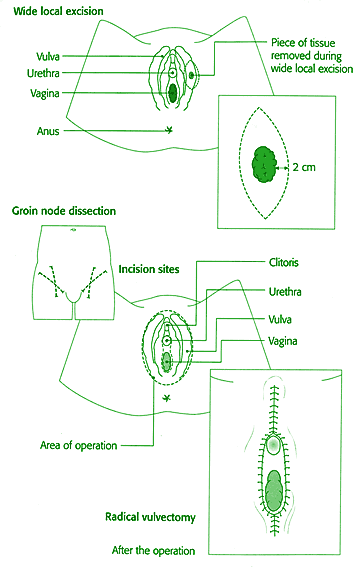|
Wide local excision, radical vulvectomy
and groin node dissection
• If you have a small vulval cancer, it may be removed under general
anaesthetic in a procedure called wide local excision. A small amount
of normal surrounding tissue is also removed. Unless the cancer is at
a very early stage, the lymph glands in one or both groins are also
removed.
• You may be monitored with vulvoscopy up to four times a year
to check that the cancer has not returned.
• If the cancer is more advanced, an operation called radical vulvectomy
and groin node dissection is usually required. This involves removing
the entire vulva and the lymph glands in the groins. If necessary, the
lower part of the urethra can be removed without affecting bladder function.
The skin with the pubic hair is not normally removed.
• The operation is carried out under general anaesthetic, usually
though separate cuts in the groins and around the vulva. The skin at
the bottom of the vagina is stitched directly to the skin outside of
the vulva. Tubes drain lymph fluid from the groin wounds for up to 10
days after surgery.
• Depending on the pathology report, you may require radiotherapy
after the wounds have healed. You will be seen regularly at the clinic
for at least 5-10 years. Penetrative sex is usually, but not always,
possible after a radical vulvectomy. If not, reconstructive surgery
may be possible at a later date.
|
|
 |




